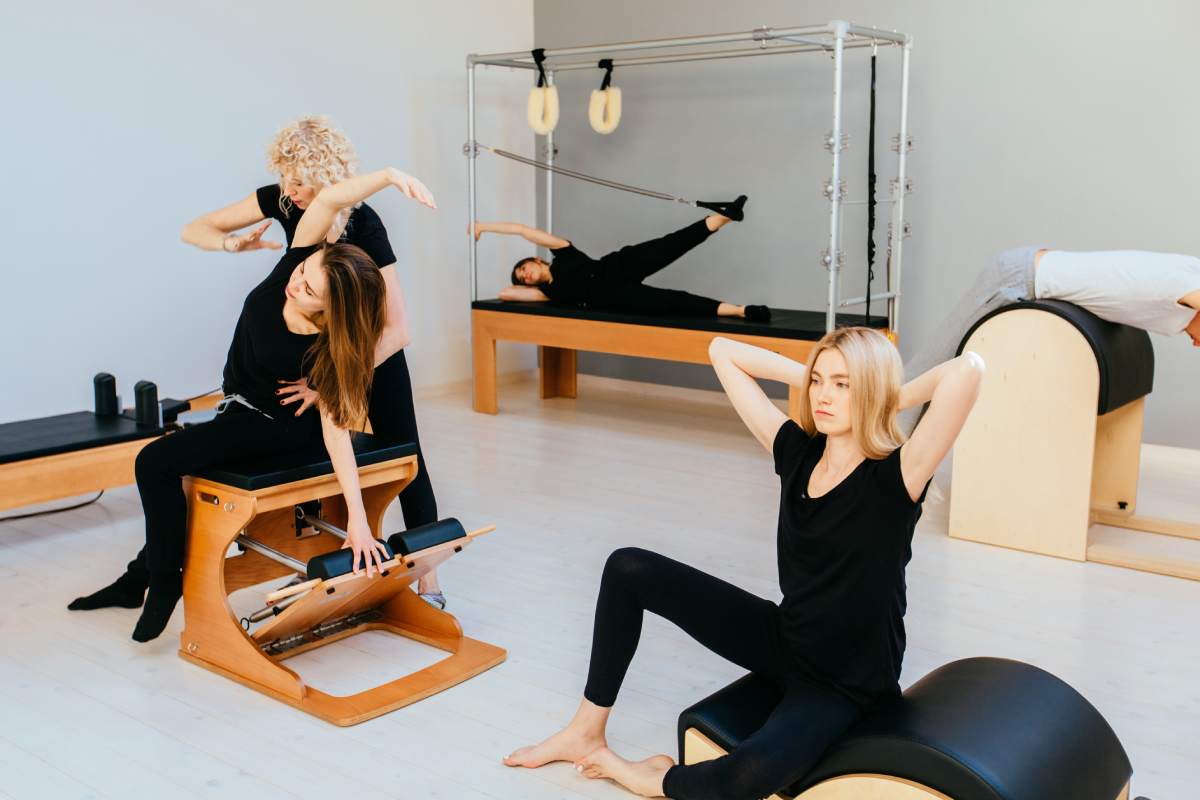The Pilates Dictionary
Pilates 101 Terminologies
Cadillac: The Cadillac consists of a trapeze “canopy” style frame, a flat stationary table, and spring-loaded attachments. It also has additional loops and attached bars covered in fuzzy cloth or padding that assists with gravity-based exercises.
The primary difference between the conventional reformer and the Cadillac Reformer is the addition of horizontal and vertical bars above the table. These bars transform Pilates into a three-dimensional exercise routine you perform up in the air.
Pilates Trapeze Table: Also known as the Cadillac, is a large piece of equipment that allows for a variety of exercises to be performed. To some it may look like some type of torture device but it was actually the first piece of Pilates equipment ever developed! After the start of WWI in 1914.
Pilates Ring: A Pilates ring is a circular, hollow ring that is light to carry. It typically has soft handles on the outside to provide a more secure and comfortable grip between your hands or your legs.
Pilates Box: The Pilates Box is a powerful postural concept which can help the Pilates instructor and student to regain correct alignment and symmetry.
Springs Colors: Each color spring corresponds to a different level of resistance: Yellow Spring: Very Light Resistance. Red Spring: Medium Resistance. Green Spring: Heavy Resistance.
Dynamic Pilates: You might see classes listed as Dynamic Pilates or Dynamic Reformer. These are (usually) done on the reformer and can often be a bit faster or tougher than normal classes. You should understand Pilates before trying any classes using the word Dynamic.
Imprinted Spine: This position pushes the lower back to the floor and helps you support your core during Pilates moves. It’s used to give extra back support in moves where your feet or legs are raised off the floor. One of the most important things to learn when doing Pilates as a beginner is this position.
Core: Many believe this is simply your abs. However, the core is the entire midsection from the bottom of your ribs to your hips and your midback to the bottom of your booty.
Lagree: A particular method of Pilates created by Sebastian Lagree. It uses an adapted form of the Reformer called a Megareformer and is a pretty tough workout. You might want to work up to this one.
Magic Circle: This is a flexible ring that can be used in Pilates classes to increase an exercise’s resistance.
Powerhouse: A word in Pilates used to describe the core of the body IE your abdominal muscles. Pilates is very good at targeting the deeper muscles that support the back and create a flatter tummy.
Neutral Spine: A relaxed position from which you start many exercises. It sees you with a naturally curved lower back. Again, it’s important that you are properly taught this by a teacher.
Switching On: When you do a Pilates move you don’t just go into things cold, you lightly contract the muscles to get them switched on ready for action. Learning how to switch on your core is one of the most important things you need to learn in Pilates to get good results.
Table Top: Lying on your back, with your legs in the air, knees bent, shins parallel to the floor, so you look a bit like a table top.
The Hundred: This was one of Joseph Pilates’ original exercises and sees you lying on your back, head and legs off the mat, arms by your sides, core switched on, breathing correctly. You then beat your arms towards the floor 100 times.
Wunda Chair: Another of Joseph Pilates’ inventions, it's a hybrid seat-come-exercise device involving a seat held on springs that you sit, stand or balance on.
Zipping Up: This is basically pulling up your lower abs pelvic floor as this lightly switches on your tummy muscles helping them work harder. It’s also why Pilates is also good at helping your pelvic floor.






